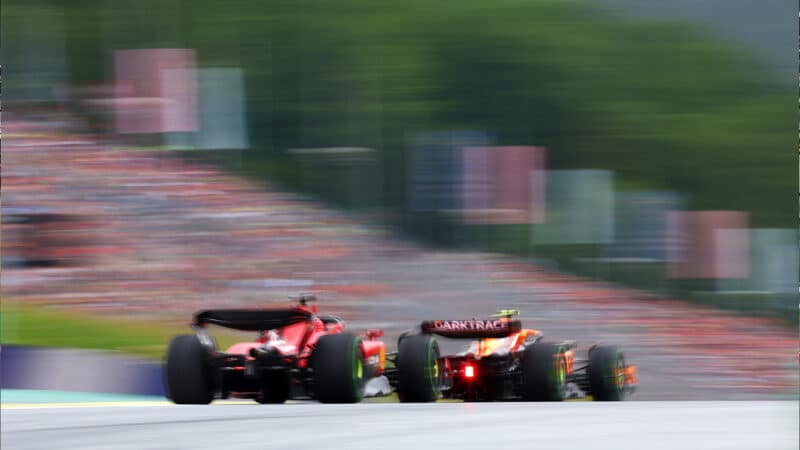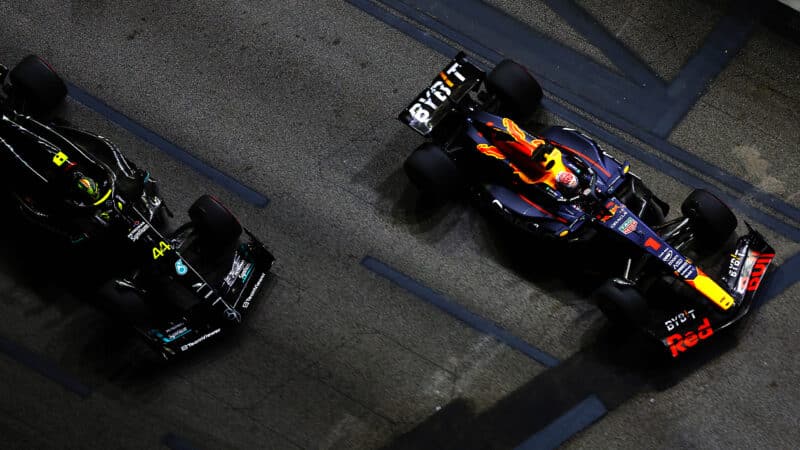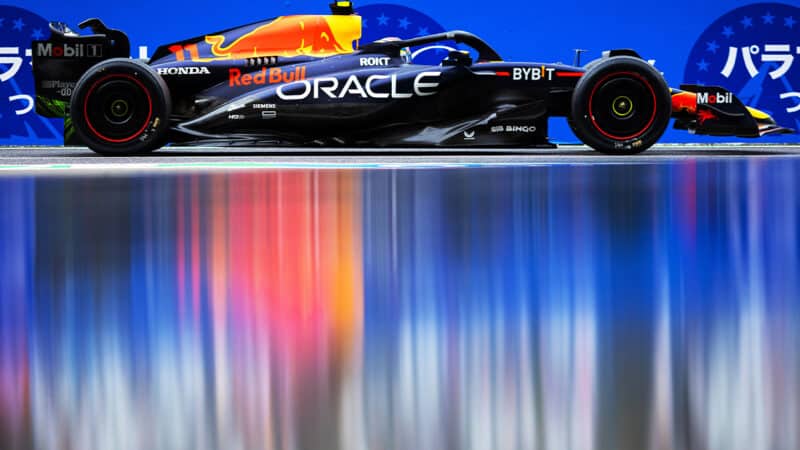Meanwhile Mercedes was different again, with its zero pod concept. The biggest limitation of last year’s W13 was its severe bouncing traits, something which could not be fully addressed with the design hard points of the rear suspension. They couldn’t run the car high enough to keep it out of bouncing territory. It was a serious limitation and the belief was that with that problem corrected on the W14, its true potential would be revealed as something capable of taking the fight to Red Bull. Whereas there were other problems being disguised by the severity of the bouncing, revealed by the W14. The deficit has halved – but that’s still been nowhere near enough to regularly compete with Max Verstappen. The bodywork and front suspension have been more Red Bull-like since its Monaco upgrade but its geometry is compromised by the hard points of the original, not least in its cockpit positioning.
Two different sets of circumstances have misdirected two of the top teams in recognising where they really needed to have been heading. McLaren meanwhile seemed to have reached an understanding of that required direction earlier – and since its Austria upgrade has been generally the second-fastest car, a car which, as Sainz points out, “is the only one which can sometimes trouble the Red Bull.”

McLaren has replaced Ferrari as Red Bull’s closest challenger
Dan Istitene/F1 via Getty Images
But that too was developed around a car originally quite different. Which has left certain legacy limitations, as Lando Norris outlined when considering his Austin prospects. “I’m not so confident [as at Qatar ]. There are just a lot more slow-speed corners here, which is not our strength. I think it’s tough when you look at it. If we look at Singapore, obviously we’re not bad in Singapore, clearly not as strong as Ferrari but still not a bad race. But we know on these types of circuits, Mercedes is going to be very strong, Ferrari is going to be very strong, Aston, here in the past have been very strong. We knew when we went to Qatar it was going to be a track which really suited us: a lot of medium high speed which is where we’re very strong and almost on par with Red Bull. There’s less of that here and a lot more slow-speed so I’m definitely not as confident but nevertheless, I’m not saying it’s going to be a bad weekend. I think we can still fight. It’s just going to be a much bigger fight, I think.”




